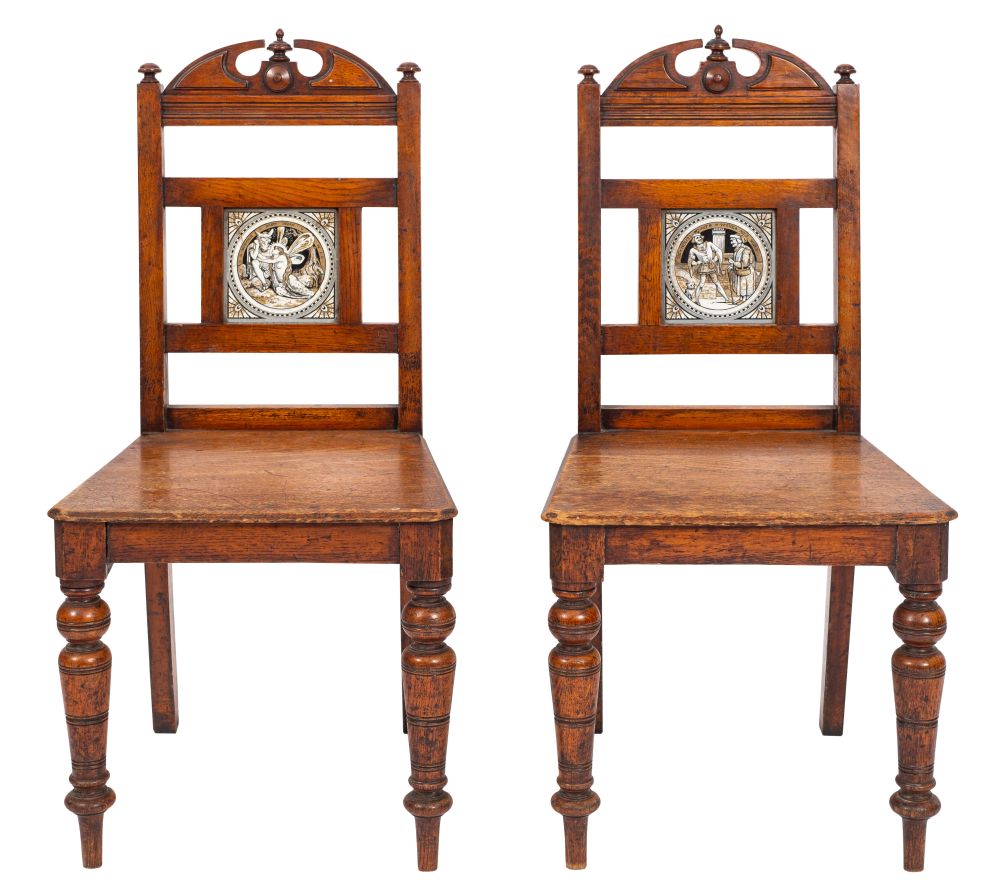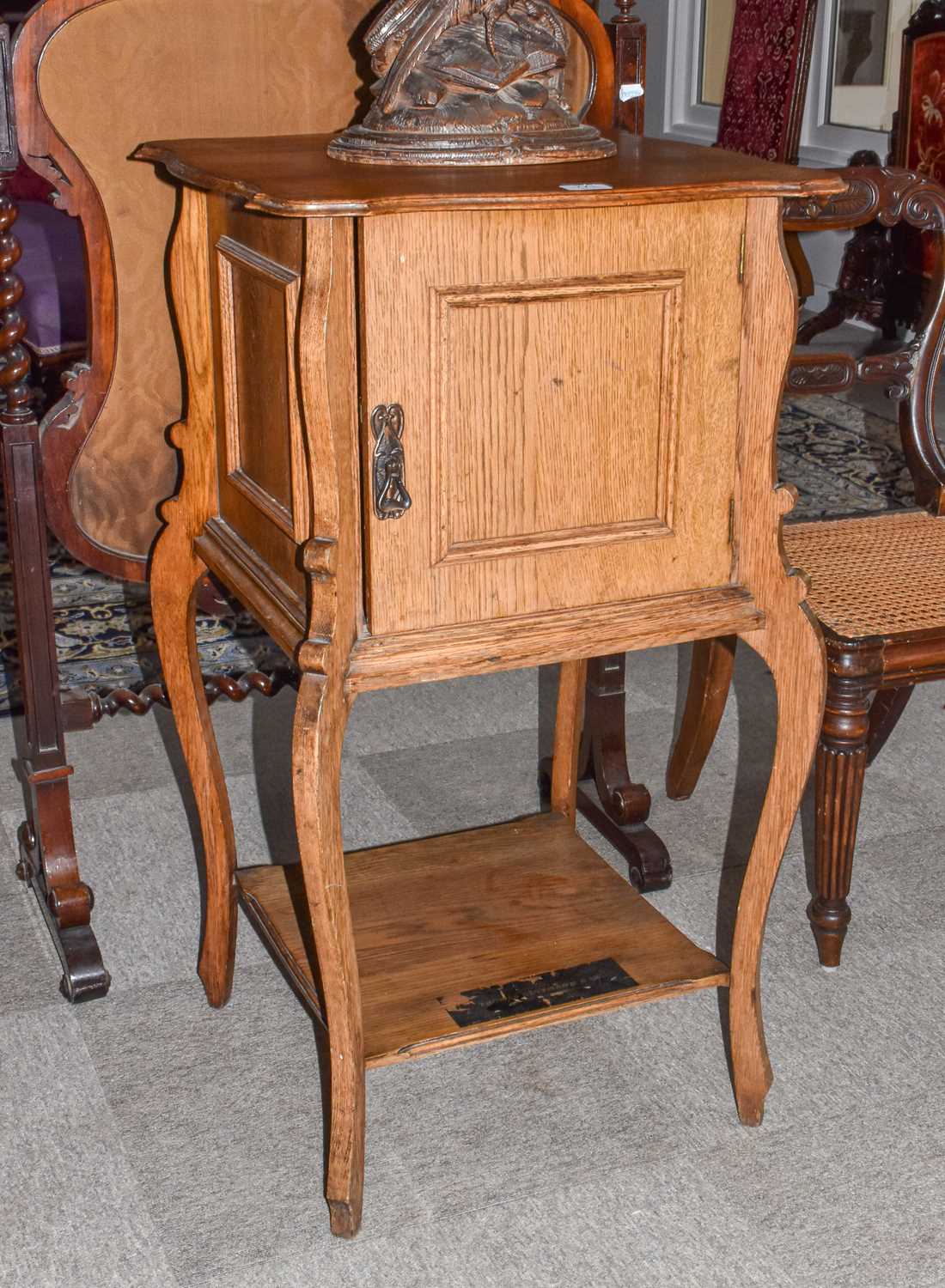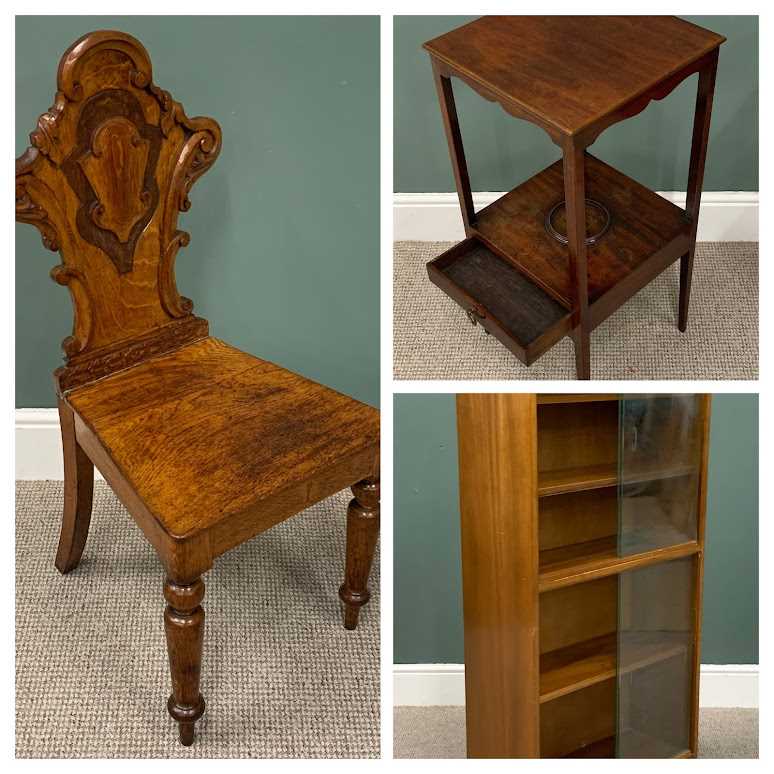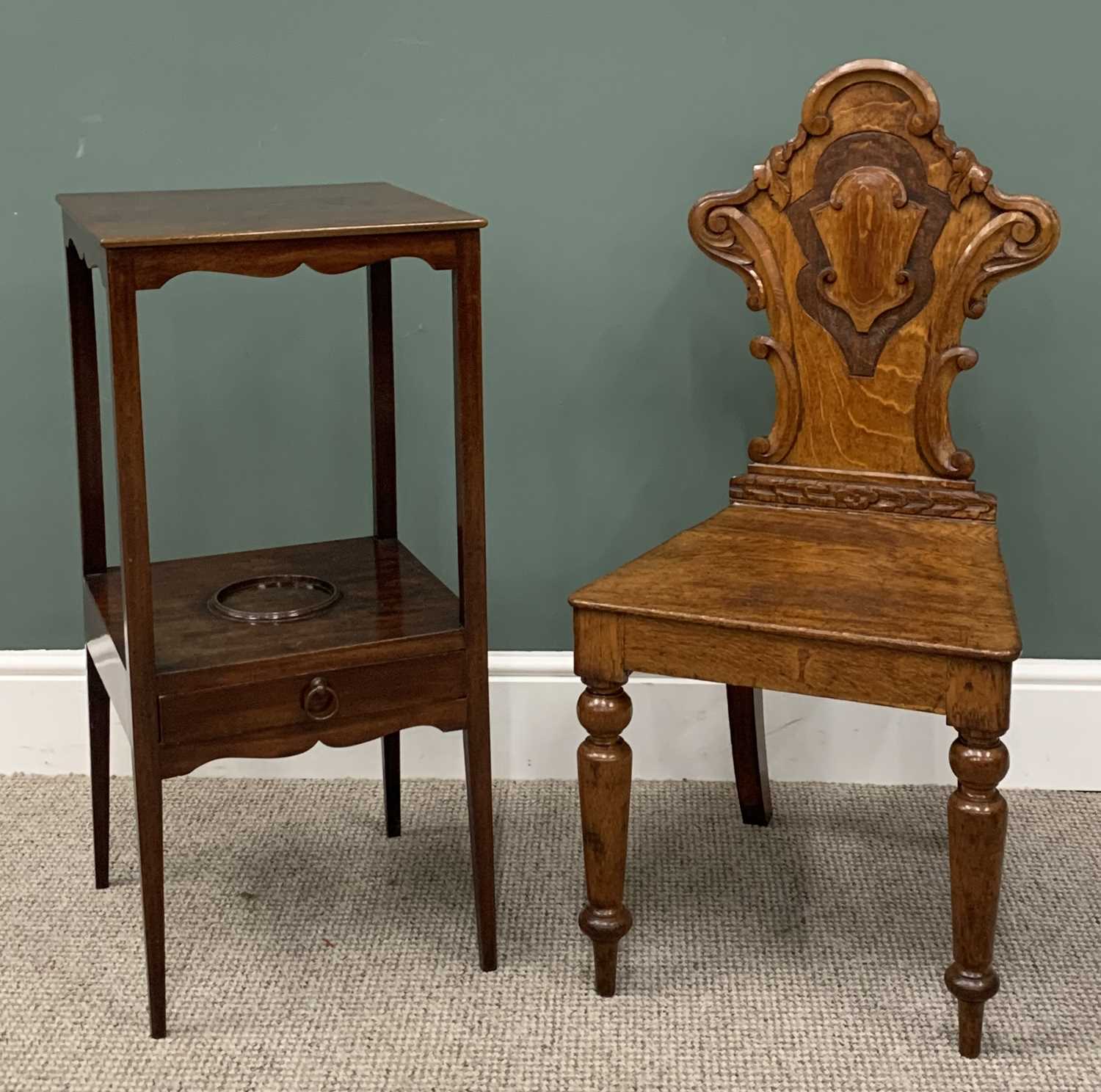A Victorian oak night watchman's tell-tale longcase timepiece or noctuary previously at Ipswich Gaol Thwaites and Reed, London for Richard S. Cole, Ipswich, mid 19th century The four pillar single train eight-day movement with anchor escapement regulated by seconds pendulum and stamped T & R, 10490 to frontplate, the dial with 6.25 inch rotating circular disc signed RICH.D S. COLE, CORNHILL, IPSWICH to centre within Roman numeral chapter ring rotating against a pivoted hour-pointer positioned to the upper margin and fitted with push-pins at every quarter to circumference, the case of simple tapered form with shallow cavetto cornice over circular glazed aperture to the rectangular hood door, the right hand side with hinged arched brass cover revealing plunger for operating the pin depressing lever, the trunk with rectangular caddy moulded door, the base applied with horizontal board cladding to fascia over skirt with simple canted top moulding, 190cm (74.75ins) high. Provenance: By repute previously at Ipswich Gaol. Richard Stinton Cole is recorded in Loomes, Brian Watchmakers & Clockmakers of the World, Volume 2 as born to Richard Cole in 1809 and retiring from the bench in 1865. The partnership between John Thwaites and George Jeremiah Reed is recorded in Baillie, G.H. Watchmakers & Clockmakers of the World as being formed in 1808. John Thwaites was the son of Ainsworth Thwaites who was apprenticed in 1735 and worked from Rosoman Row, Clerkenwell, London 1751-80. He was an accomplished maker who supplied the clock for the tower at the Horse Guards Parade. John Thwaites was born in 1757 and took over the business presumably on the death of his father in 1780 before moving to Bowling Green Lane. The firm became well known for supplying all forms of clocks and movements either wholesale for others to retail, or signed by themselves. The partnership continued under John Thwaite's leadership from several addresses in London until his death in 1842. The business has subsequently passed through a series of successors and is still trading today from Rottingdean near Brighton. The night watchman's clock or noctuary was developed as a 'tell-tale' method of recording a night watchman's progress throughout his shift. The dial is formed as a revolving disc with the time read against a pointer to the upper margin which also doubles-up as a lever for pushing-in pins set into the circumference of the disc operated by a plunger fitted to the exterior of the locked case. By having two such timepieces at each end of a watchman's circuit a record of his patrols throughout the night can be recorded. The pins are automatically reset to their raised position by a ramp-wheel positioned behind the disc at around the one o'clock position. This design of 'Watchman's Noctuary' was subject of a patent submitted by Samuel Day in 1803 however the patent was disputed on the grounds that the Earl of Exeter had been using two such timepieces made by Boulton and Watt since 1799. In addition to Thwaites and Reed the Derby firm of Whitehurst and Son are also known to have produced such timepieces in significant numbers. The serial number stamped on the frontplate of the current lot would date it to the early 1850's which would correlate with the completion of a phase of expansion of Ipswich Gaol which commenced in 1849. Condition report disclaimer
A Victorian oak night watchman's tell-tale longcase timepiece or noctuary previously at Ipswich Gaol Thwaites and Reed, London for Richard S. Cole, Ipswich, mid 19th century The four pillar single train eight-day movement with anchor escapement regulated by seconds pendulum and stamped T & R, 10490 to frontplate, the dial with 6.25 inch rotating circular disc signed RICH.D S. COLE, CORNHILL, IPSWICH to centre within Roman numeral chapter ring rotating against a pivoted hour-pointer positioned to the upper margin and fitted with push-pins at every quarter to circumference, the case of simple tapered form with shallow cavetto cornice over circular glazed aperture to the rectangular hood door, the right hand side with hinged arched brass cover revealing plunger for operating the pin depressing lever, the trunk with rectangular caddy moulded door, the base applied with horizontal board cladding to fascia over skirt with simple canted top moulding, 190cm (74.75ins) high. Provenance: By repute previously at Ipswich Gaol. Richard Stinton Cole is recorded in Loomes, Brian Watchmakers & Clockmakers of the World, Volume 2 as born to Richard Cole in 1809 and retiring from the bench in 1865. The partnership between John Thwaites and George Jeremiah Reed is recorded in Baillie, G.H. Watchmakers & Clockmakers of the World as being formed in 1808. John Thwaites was the son of Ainsworth Thwaites who was apprenticed in 1735 and worked from Rosoman Row, Clerkenwell, London 1751-80. He was an accomplished maker who supplied the clock for the tower at the Horse Guards Parade. John Thwaites was born in 1757 and took over the business presumably on the death of his father in 1780 before moving to Bowling Green Lane. The firm became well known for supplying all forms of clocks and movements either wholesale for others to retail, or signed by themselves. The partnership continued under John Thwaite's leadership from several addresses in London until his death in 1842. The business has subsequently passed through a series of successors and is still trading today from Rottingdean near Brighton. The night watchman's clock or noctuary was developed as a 'tell-tale' method of recording a night watchman's progress throughout his shift. The dial is formed as a revolving disc with the time read against a pointer to the upper margin which also doubles-up as a lever for pushing-in pins set into the circumference of the disc operated by a plunger fitted to the exterior of the locked case. By having two such timepieces at each end of a watchman's circuit a record of his patrols throughout the night can be recorded. The pins are automatically reset to their raised position by a ramp-wheel positioned behind the disc at around the one o'clock position. This design of 'Watchman's Noctuary' was subject of a patent submitted by Samuel Day in 1803 however the patent was disputed on the grounds that the Earl of Exeter had been using two such timepieces made by Boulton and Watt since 1799. In addition to Thwaites and Reed the Derby firm of Whitehurst and Son are also known to have produced such timepieces in significant numbers. The serial number stamped on the frontplate of the current lot would date it to the early 1850's which would correlate with the completion of a phase of expansion of Ipswich Gaol which commenced in 1849. Condition report disclaimer













Try LotSearch and its premium features for 7 days - without any costs!
Be notified automatically about new items in upcoming auctions.
Create an alert